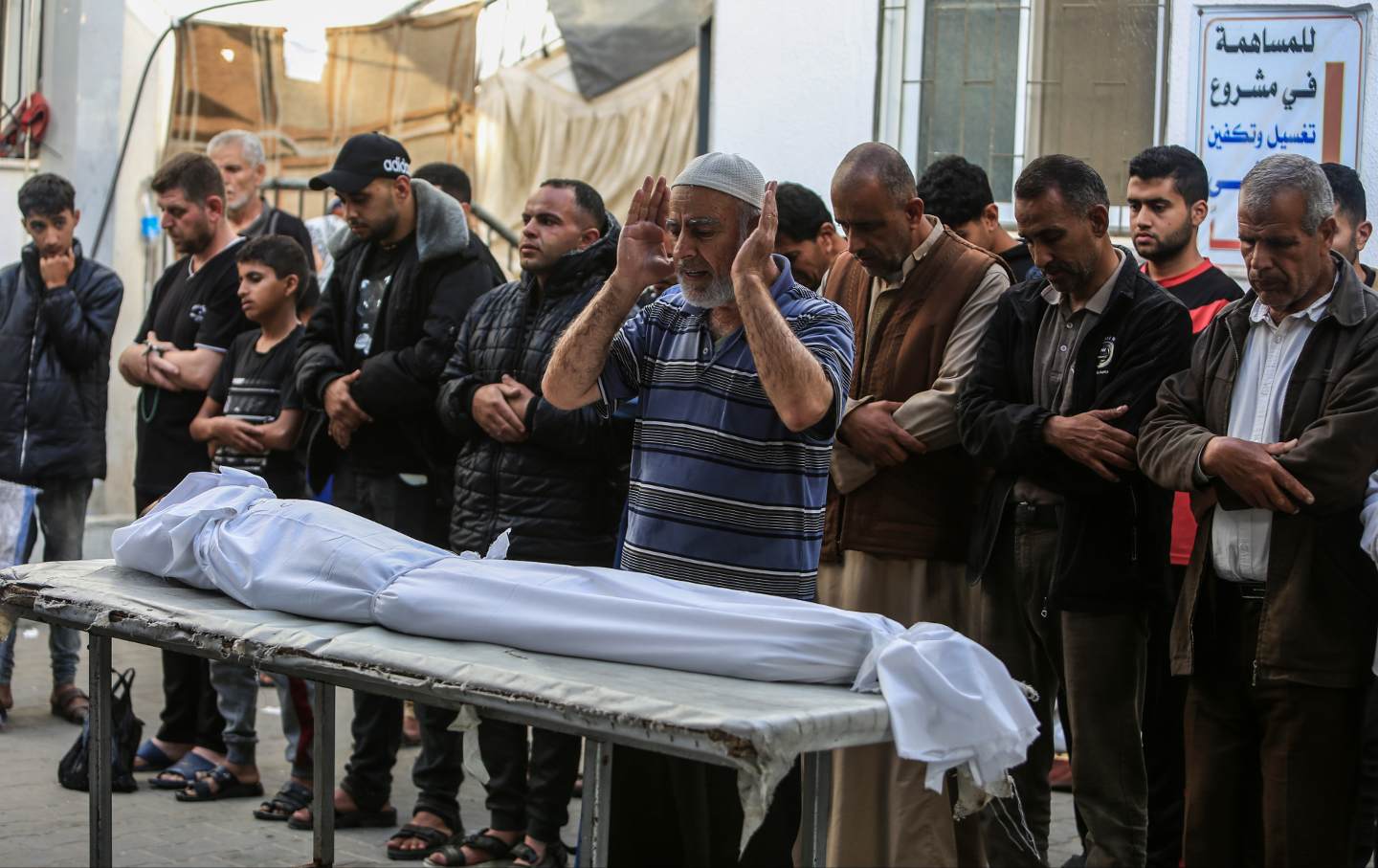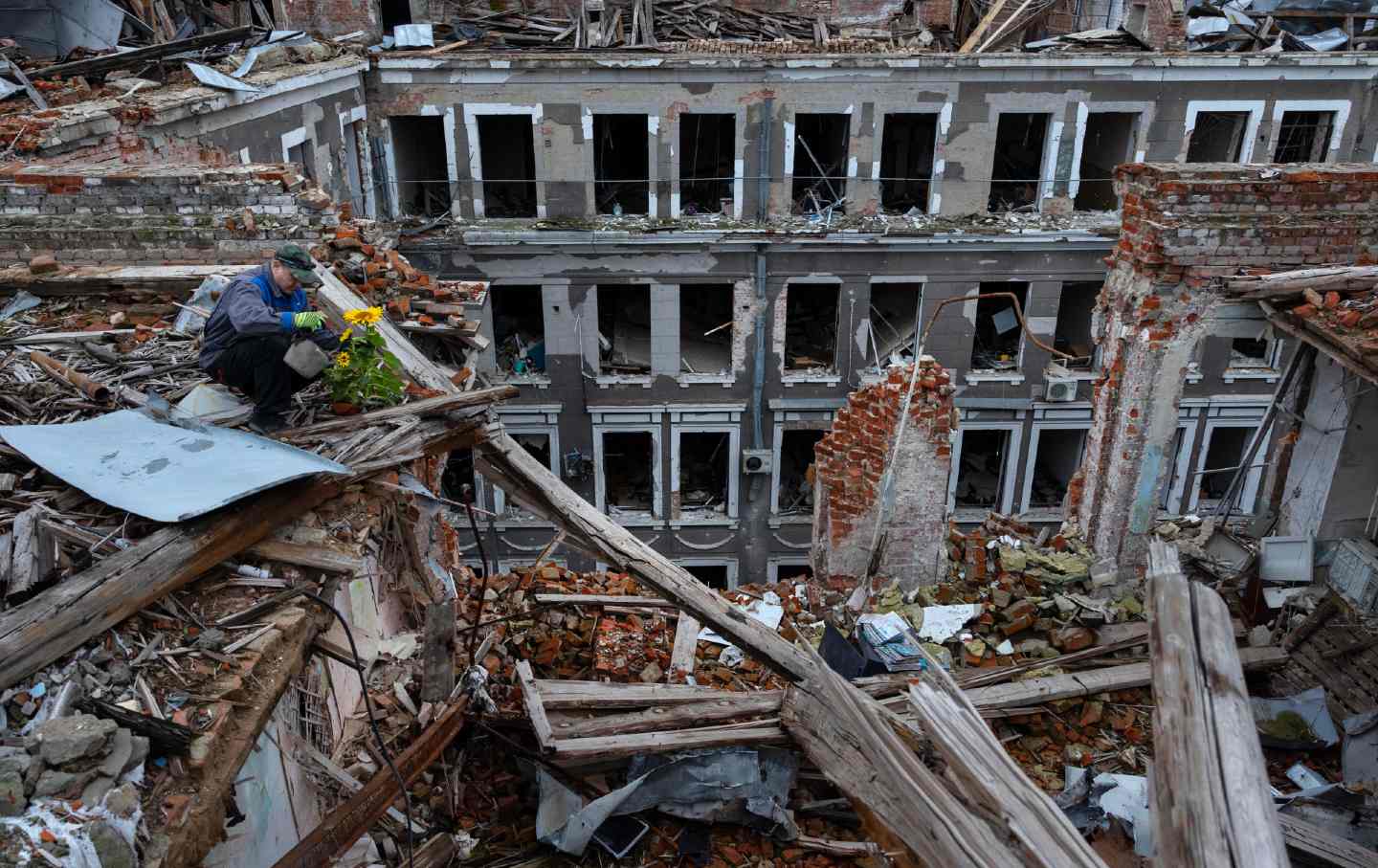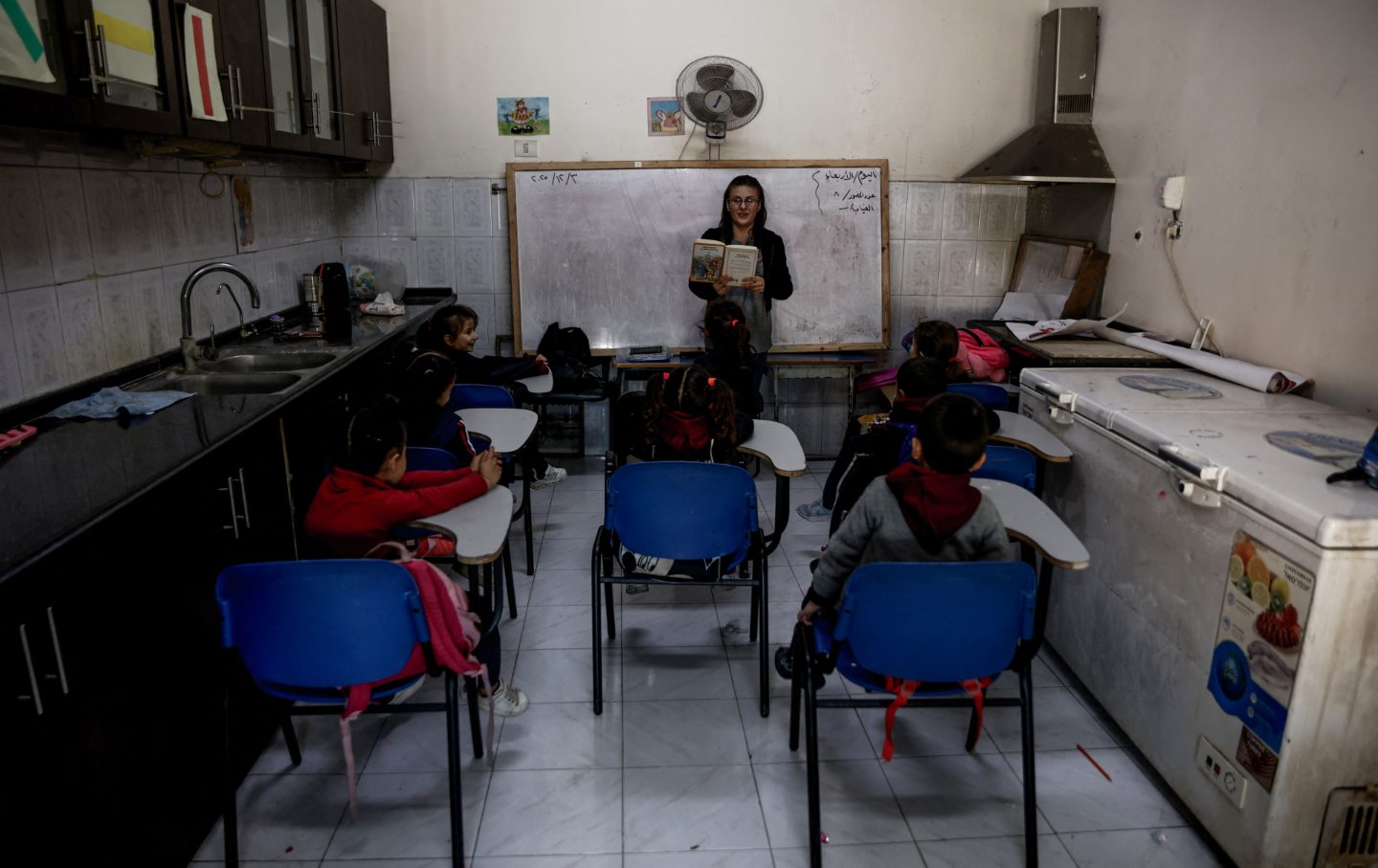Don’t Believe the Conspiracies About the Gaza Death Toll
The statistical evidence is clear: Civilians in Gaza have overwhelmingly borne the brunt of Israel’s assault.

In May, news reports proclaimed that the death counts of women and children in Gaza had been dramatically exaggerated. “UN admits Gaza death toll wrong, with almost 50% fewer women, children killed than previously reported,” a New York Post headline asserted. “Apparently, the Hamas figures repeatedly cited are false,” commented MSNBC’s Joe Scarborough. In fact, the overall number of reported deaths hadn’t fallen: the apparent reduction in fatalities among women and children reflected a UN decision to present counts for these two groups only among a subset of deaths it referred to as “identified,” and not, as it had until recently, among all who died. That still left open the reason for the shift, but the response from media outlets and war hawks was to massively overstate its implications—and, effectively, to whitewash the harm done to victims of a war supported by our government.
Death counts can serve as hard indicators of injustice, but they are also sites of political contestation. This has been starkly true in Gaza, where uncertainties amidst the chaos of unremitting bombardment have been exploited again and again by those seeking to give moral cover to the Israeli assault. But incompleteness and incongruities, as in the UN’s reporting shift, shouldn’t lead observers to miss the forest for the trees. Not only does an examination of the full landscape of available statistics leave no doubt that the civilian population of Gaza has borne the overwhelming brunt of Israeli’s devastating campaign, as of yet uncounted “indirect deaths” inflicted by the invasion—from malnutrition and disease—are likely to bring the full toll considerably higher.
In January, the pro-Israel Washington Institute released a report by analyst Gabriel Epstein concluding that existing mortality figures from Gaza undercounted deaths among men, and so, in his view, incorrectly fed perceptions that the Israeli military was engaged in indiscriminate violence. Conflict fatality data in Gaza is typically reported by the Gaza Ministry of Health, whose figures in previous conflicts—as Epstein concedes—have generally aligned with those from independent agencies. Yet throughout the war, US and Israeli officials have questioned the MOH death counts, citing the ministry’s position as part of the Hamas-run government. “I have no notion that the Palestinians are telling the truth about how many people are killed,” President Biden said on October 25.
The very next day, the MOH released a database with individual-level details on more than 7,000 people killed in Gaza since the beginning of the war. An analysis of this data in The Lancet found “no obvious reason to doubt [its] validity.” Shortly afterward, reporting in the Intercept found that, of 46 members of a single family reported killed prior to the release of the data, 43 appeared on that list, suggesting that, if anything, it may have been an underestimate. The day after the MOH released its dataset, however, the ground war began, totally upending life in Gaza—including counting of the dead. As chaos descended, the usual hospital-based fatality-collection system faltered. Shortly after onset of the ground war, 89 percent of Gazan hospitals were at least partially operational. By March, the share still functioning had fallen to 28 percent. As the war ground on, attacks on healthcare facilities, ambulances, and civilian infrastructure amounted to a “war on health” that hampered the collection of fatality numbers.
Beginning around November, the MOH began supplementing its “central collection system” with a new one that relied on media reports, and later on submissions from families through Google forms. The deaths based on media reports were later mostly reclassified as “incomplete” or “unidentified” by the MOH. Meanwhile, a separate, non-healthcare-focused agency in Gaza—the Government Media Office (GMO)—has continued to provide death counts of women and children among all deaths, including those that appear to be derived from media reports.
Reports that the United Nations had “halved” its estimates of the number of women and children killed reflect the fact that, between its May 6 and May 8 updates, the UN stopped using the GMO’s higher figures on deaths among women and children and instead provided the lower MOH figures for these groups. The May 6 report gave the figure of 34,735 deaths, more than 14,500 of which were children and more than 9,500 of which were women, the latter two figures explicitly attributed to the GMO. In the May 8 report, while total deaths rose to 34,844, a demographic breakdown was provided for only 24,686 of these deaths; in that report, sourced to the MOH, the count included 7,797 children and 4,959 women.
This change in demographic proportions is real. The difference may well speak to higher data standards at a public health bureau like the MOH than at a PR agency like the GMO. Because none of the Gazan statistics differentiate combatants and civilians, the demographic proportions take on particular importance in assessing the Israeli military campaign: Fatalities among children, elderly, and women provide a rough “lower bound” of the civilian death toll.
But even if the shift makes the results more accurate, it provides little comfort: The percentage of those killed who are children and women may be 32 and 20 percent, respectively, rather than 42 and 27 percent. To put it another way: even if the GMO’s disaggregation were to prove spurious, the ramifications of the more rigorous MOH numbers remain horrifying.
Applying the MOH’s demographic breakdowns to the total (as of May 28) of 36,906 dead suggests that more than 11,000 children, about 7,000 women, and nearly 3,000 elderly people have been killed in this assault. In other words, around 60 percent of those killed were clearly not combatants. But we can’t assume that every adult male is a combatant. If we assume that the number of noncombatant men who have been killed equals the number of women killed, which is equivalent to about half of the roughly 14,000 adult male deaths, we can estimate that around 80 percent of the Gazans killed have been civilians.
In a follow-up report published in March, Epstein argued that declining data quality makes not just the demographics but the overall totals unreliable. It seems probable that the quality of the data has deteriorated since the onset of the conflict. However, alternative methods—to say nothing of the sheer scale of destruction evident from satellite images—appear to corroborate the overall totals. Francois Balloux, a professor of computational biology at University College London, recommended calculating the share of all United Nations Relief and Works Agency workers killed as a proxy for the overall incidence of civilian deaths in the war. Using the most recent figures, 189 of 13,000 UNRWA workers, or 1.5 percent, have been killed since October 7. Applying that percentage to the overall Gazan population of 2.2 million suggests that around 30,000 total deaths have occurred, which aligns with the MOH totals.
This figure, however, is likely to be an undercount, not only because it doesn’t include bodies lying under the rubble, but because it appears to largely neglect “indirect” deaths—those stemming from infectious disease epidemics, untreated chronic illness, and malnutrition. A 2008 review by the Geneva Declaration Secretariat concluded that in “almost all contemporary conflicts, the number of indirect victims of armed violence is many times larger than the number of battle deaths.”
That such “indirect deaths” are mounting in Gaza is not in doubt: the healthcare system has been decimated; malnutrition is widespread, with full famine likely underway in northern Gaza; civilian infrastructure has been gutted; clean water is in short supply; and most of the population has been violently displaced, often into crowded and unsanitary camps, in many cases repeatedly. By one estimate, 350,000 Gazans with chronic conditions are going without needed medications due to the war. “Every day I myself pronounce people dead from very routine medical conditions such as a grandmother with a urinary tract infection, the middle-aged man who dies from his diabetes because he doesn’t have access to his medicines,” a US doctor who worked at Gaza’s European hospital told NPR recently.
Yet we have little data on these indirect deaths. If there were comprehensive data on deaths of all cause in Gaza, we could compare it to a baseline rate to track what epidemiologists call “excess deaths,” i.e. the number of deaths above what would be expected if pre-war trends had continued. By subtracting violent deaths from these overall excess deaths, one can estimate indirect deaths attributable to war. But such data has not been published, and such deaths from deteriorating health may in any event take some time to mount. Household field surveys might also, at some later date, shed light on these indirect deaths. But for now, we can only look to what we know from past conflicts, media reports, academic projections, and an understanding of the enormous extent of destruction of civilian infrastructure—35 percent of all buildings have destroyed or damaged—to draw conclusions about indirect deaths in Gaza.
For instance, the Geneva Declaration Secretariat’s review of prior conflicts found that indirect deaths have, for most conflicts since the 1990s, been three to fifteen-fold higher than direct deaths, and suggest a ratio of four to one as a “conservative” estimate. There are reasons to think this ratio could be on the low end in Gaza given, among other things, the protracted and brutal siege. But even the most conservative of assumptions would consequently imply that large numbers of indirect deaths might eventually accrue, even after—and if—hostilities are halted and the Israel military withdraws. Overwhelmingly, of course, such deaths are of civilians.
Like the bodies beneath the rubble, the final death toll may remain obscured, or opportunistically undermined, for years to come. But what we know with certainty is indicative of atrocity: It is civilians who are overwhelmingly the victims of the Israeli military.
Disobey authoritarians, support The Nation
Over the past year you’ve read Nation writers like Elie Mystal, Kaveh Akbar, John Nichols, Joan Walsh, Bryce Covert, Dave Zirin, Jeet Heer, Michael T. Klare, Katha Pollitt, Amy Littlefield, Gregg Gonsalves, and Sasha Abramsky take on the Trump family’s corruption, set the record straight about Robert F. Kennedy Jr.’s catastrophic Make America Healthy Again movement, survey the fallout and human cost of the DOGE wrecking ball, anticipate the Supreme Court’s dangerous antidemocratic rulings, and amplify successful tactics of resistance on the streets and in Congress.
We publish these stories because when members of our communities are being abducted, household debt is climbing, and AI data centers are causing water and electricity shortages, we have a duty as journalists to do all we can to inform the public.
In 2026, our aim is to do more than ever before—but we need your support to make that happen.
Through December 31, a generous donor will match all donations up to $75,000. That means that your contribution will be doubled, dollar for dollar. If we hit the full match, we’ll be starting 2026 with $150,000 to invest in the stories that impact real people’s lives—the kinds of stories that billionaire-owned, corporate-backed outlets aren’t covering.
With your support, our team will publish major stories that the president and his allies won’t want you to read. We’ll cover the emerging military-tech industrial complex and matters of war, peace, and surveillance, as well as the affordability crisis, hunger, housing, healthcare, the environment, attacks on reproductive rights, and much more. At the same time, we’ll imagine alternatives to Trumpian rule and uplift efforts to create a better world, here and now.
While your gift has twice the impact, I’m asking you to support The Nation with a donation today. You’ll empower the journalists, editors, and fact-checkers best equipped to hold this authoritarian administration to account.
I hope you won’t miss this moment—donate to The Nation today.
Onward,
Katrina vanden Heuvel
Editor and publisher, The Nation








